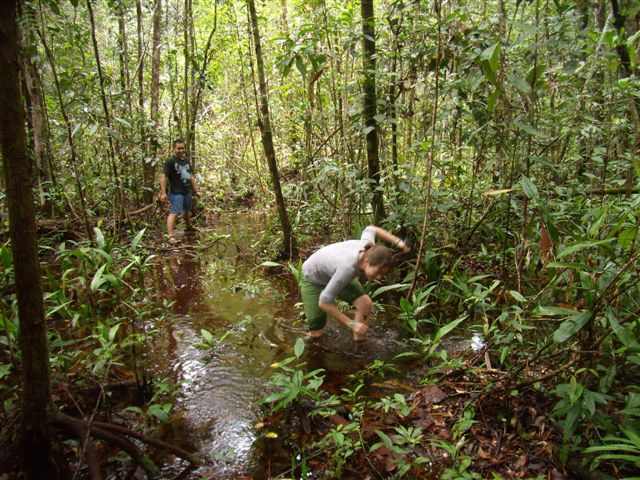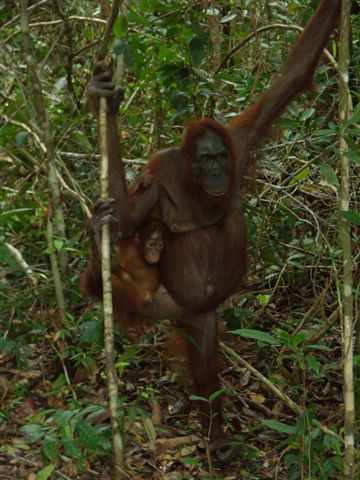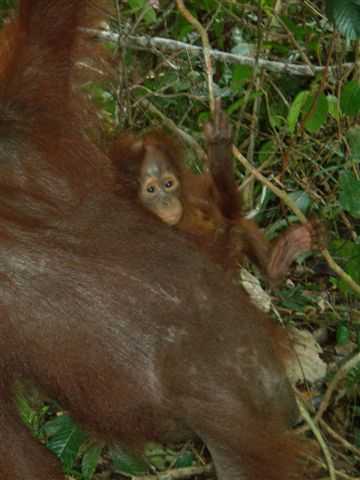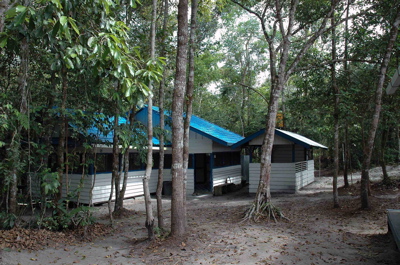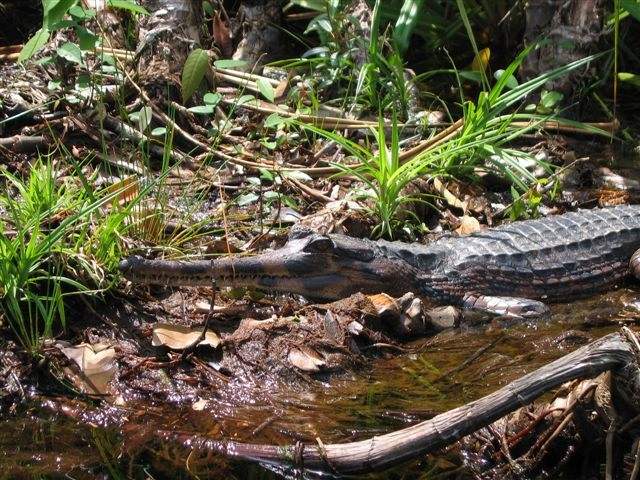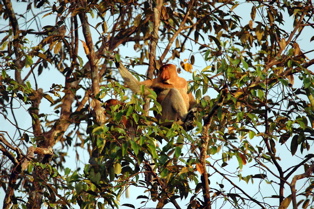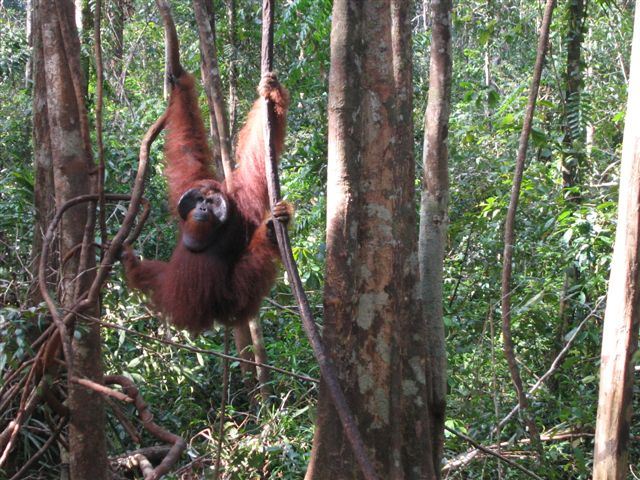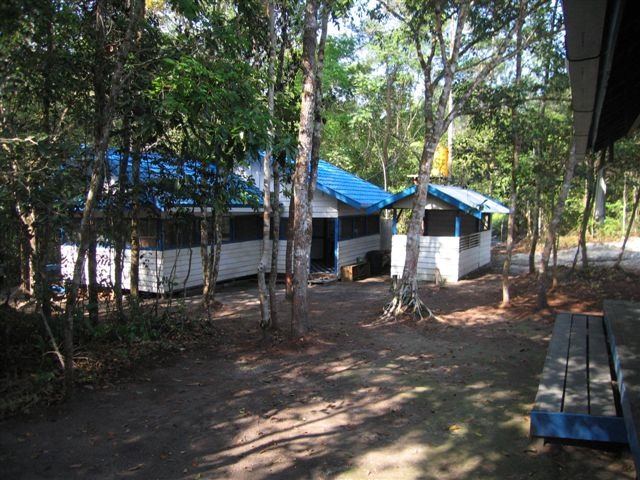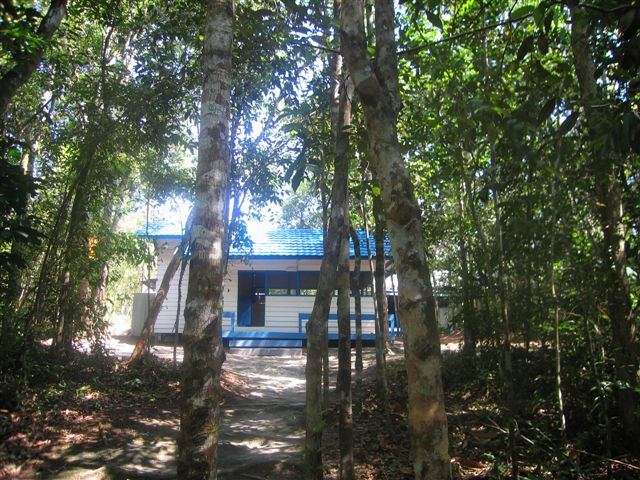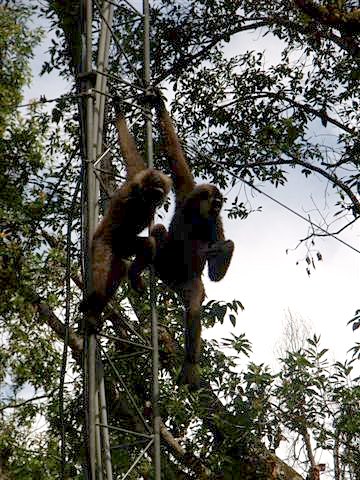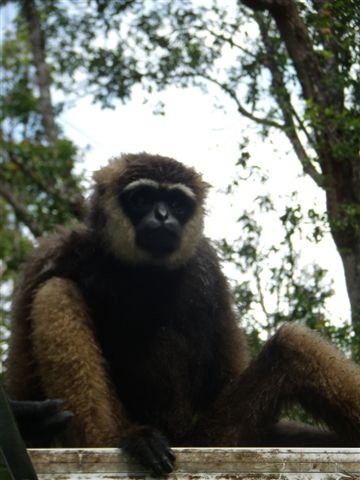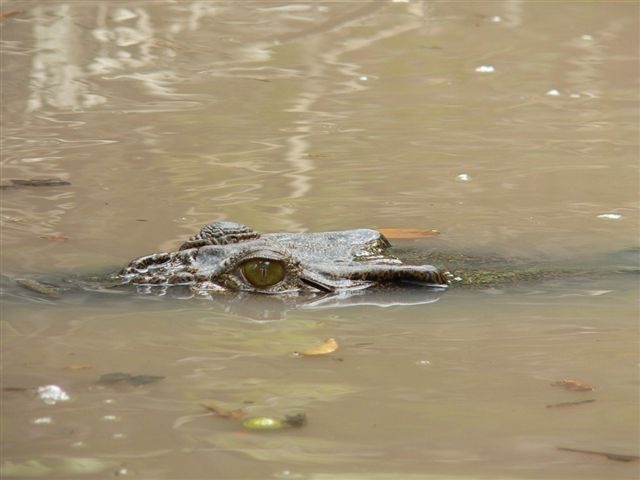Last night, before I was side tracked into giving you an update on Zidane (who I saw again today and he is still looking good), I thought this story of a weekend trip to Tanjung Puting National Park would be quite good fun. Now I have started it, I have a feeling it is going to be dull! As I've mentioned Elly from the London office is out on a short visit. Devis and I took her up to Pondok Ambung and Camp Leakey. The night at Pondok Ambung was great as ever and nothing is better than waking to the sound of gibbons singing.
After breakfast we decided to go for a short walk to have a look around. Besides one glorious veiled-lady fungus (beautiful but very smelly) and some pitcher plants, we did not see too much besides water.
Veiled-lady fungus
Pitcher Plants
All the swamps are full. I was the first to stumble in but, I am pleased to say Devis and Elly quickly followed suit. Also, as I was the one with the camera my mishaps are not recorded :-)
(Devis insists I tell you that, in the photo, he is not in fact falling over, but picking up a stick. I leave it to you to decide!)
We then went up to Camp Leakey. I hope next year we can update the displays in the Information Centre which are starting to deteriorate and look a bit tired. I was attempting to show this to Elly but understandably she was far more interested in the orangutans.
With Gara and her new baby around, who can blame her?





